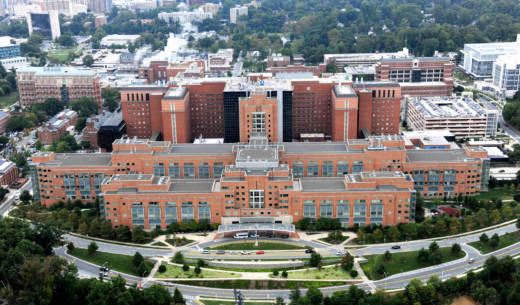Biomedical research and public health are among the big losers in the Trump administration's proposed budget.
The proposal promises:
- A "major reorganization" in the National Institutes of Health, which supports most of the nation's research on diseases and treatments. That includes a cut of $5.8 billion, about 20 percent of NIH's $30 billion budget.
- "Reform" of funding for the Centers for Disease and Prevention, which works to prevent, monitor and combat disease outbreaks. The budget mentions a $500 million block grant to states.
- An additional $500 million for the Department of Health and Human Services to "expand opioid misuse prevention efforts and to increase access to treatment and recovery services to help Americans who are misusing opioids get the help they need."
- Investment in "mental health activities that are awarded to high-performing entities and focus on high priority areas, such as suicide prevention, serious mental illness, and children's mental health." No specifics are provided.
Funding from the National Institutes of Health flows to more than 2,600 institutions around the country and creates more than 313,000 full- and part-time jobs, according to a 2016 study. So it's not obvious how slashing billions from the NIH budget, as the Trump administration proposes, will bring more jobs to America.
That $5.8 billion cut represents a 20 percent reduction in the NIH budget, which is about $30 billion. The federal government hands out most of this funding rather than spending it on its own employees, but the budget proposal is not clear on how much of the spending cuts target grants to university scientists.
Federal research grant money flows primarily to universities, and they in turn spend billions to buy equipment and services from local companies. Economist Bruce Weinberg and colleagues at Ohio State University looked at what happened to federal research dollars that flowed to nine major Midwestern universities.

9(MDAxOTAwOTE4MDEyMTkxMDAzNjczZDljZA004))
